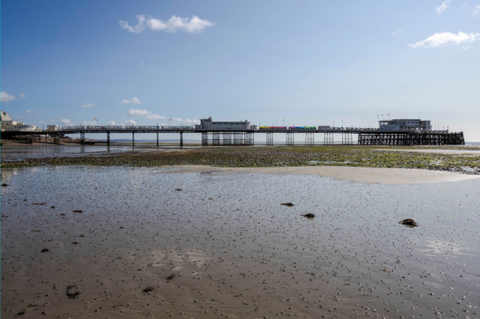5 Things to Consider When Choosing a Paddling Location
Share
By Lee Richardson
People who are just starting out in kayaking often have difficulty choosing a good spot, and once they find one, they tend to use it over and over. A change in scenery is often refreshing and inspiring, but it is sometimes difficult for beginners to identify places that are appropriate for beginner paddles.
There is always a certain degree of risk involved in going to a new location, especially when you do not know what the hazards will be at any given location. I have one particular experience that comes to mind when I think back to my beginning paddling days.
When I first started, a couple friends and I took the Pelicans that we had bought and went out in the ocean with them to a place that had current. I had no idea there was current there. I was used to my days in Ontario, paddling lakes in canoes, and now here I was, just out giving the small recreational kayaks a go, or so I thought.

I realized that day that there was a lot for me to learn. That particular day, the current was not excessively strong, but strong enough that it made me realize I needed to learn more about that environment. I found that I needed to consider several factors and learn more about the ocean before I ventured out in these places again.
There are 5 main things I discovered I needed to consider when choosing a paddling location:
Landings - I needed to go to places where there are a lot of landings. If we had a problem, I needed to know that I had multiple potential landings close by that I could get to. I needed to be able to swim to those places and get myself out of the ocean so I could not be too far from shore on these paddles. I would have to be “Handrailing,” a term I will define further in future sessions or blog posts. Crossing can be a hazard for people starting out as well. It is often better to follow the shoreline out and back.

Weather - I needed to know that the weather was going to be favorable and dress appropriately. Finding a reliable source for specific weather and local weather conditions can be challenging. A lot of the weather information available isn't specific to small bays or local paddle spots, therefore, I learned from courses and trial and error what the forecasts for my local spots meant for specific places.
Tides - Tide heights are important to kayakers for several reasons, but for me, I learned the hard way, and came back to a launch spot to take my kayak out and I had to walk through boot sucking mud for over a kilometre to get my kayak out of the water. It is important to learn how to read the tide tables and avoid issues with launch landing and “launching” spots.

What to Bring - It is always challenging knowing exactly what to bring. The Transport Canada required equipment is a bare minimum and I learned there were a few other handy things to bring, including a two way communication device and a first aid kit. I now bring more than that, however, in the beginning, it gave me a sense of security to have those items.
Current - I needed to know if the current was going to affect the speed I could paddle. In the past, I have got to my clutch spot so quickly, then had to slug it back through current, making me behind on my budgeted time because I did not factor in some current in the direction against me. Wind can have the same effect.
Having these 5 pieces of information is a great starting point and factoring them into your risk assessment before choosing a paddle location will pay off.
If you would like to learn more about choosing paddling locations as a beginner, I am hosting a free class, “How to Choose the Right Paddle Location for Beginners,” on May 7th. Register HERE.
